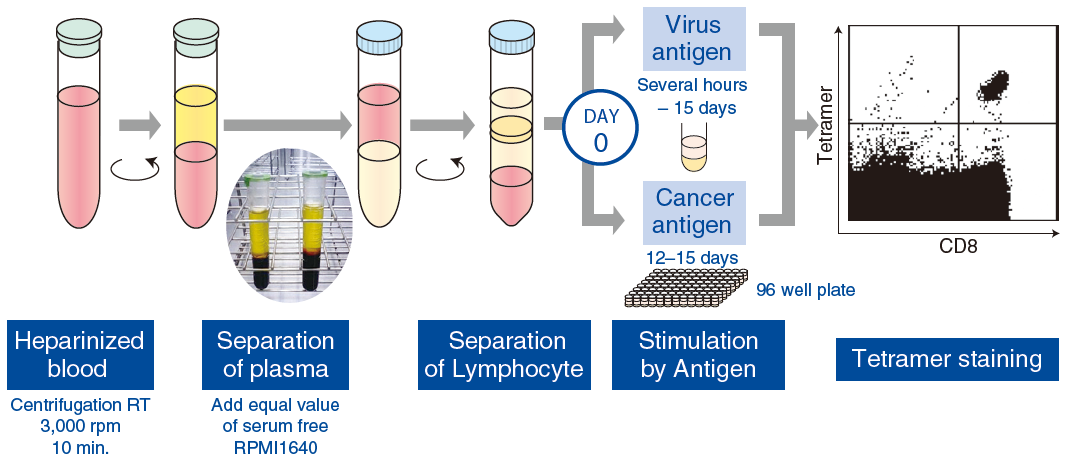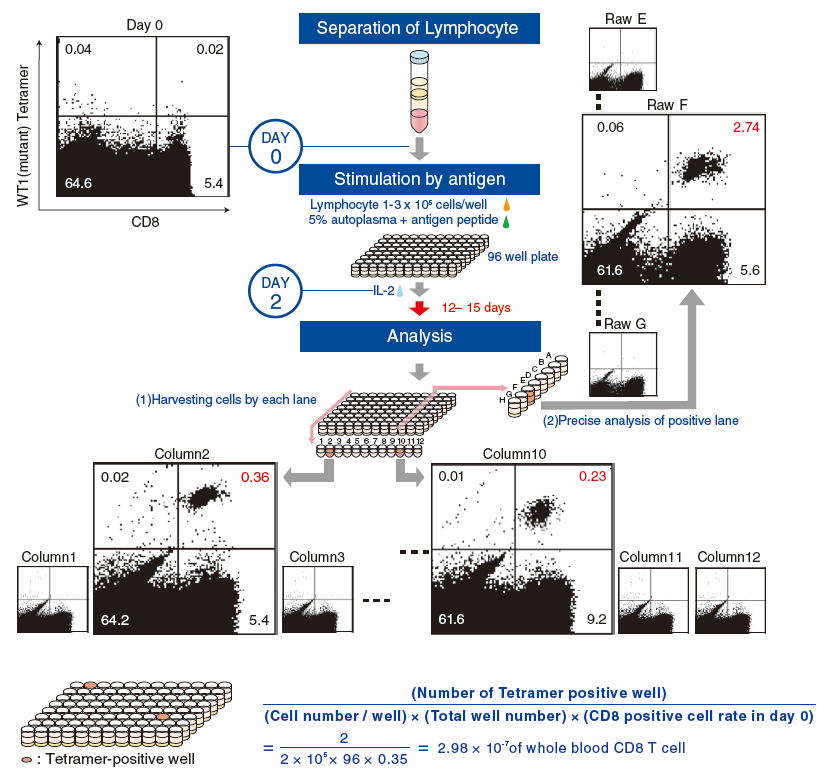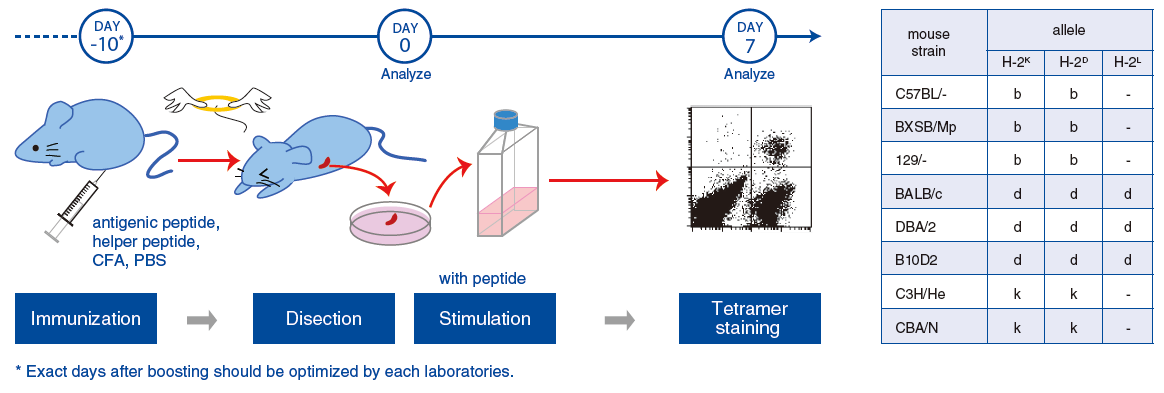- Japan(Japanese / English)
- Global
- MBL TOP
- MBL site search
Induction and detection of antigen specific CTL
MHC Tetramers are used as detection reagents for viral or cancer antigen-specific CTL. Because of their relative rarity compared with viral antigen-specific CTL, cancer antigen-specific CTL can be difficult to detect immediately following blood collection. Using the Mixed Lymphocyte-Peptide Cultures (MLPC) method, Karaniks et al. found that increased specific CTL in peripheral blood resulted from vaccine therapy to melanoma patients (J. Immunol., 2003, 171, 4898). The MLPC method expands antigen-specific CTL via culture of buffy coat cells with a stimulating peptide, thus allowing for the enumeration of low frequency CTLs, which are below detection in freshly isolated blood. Using the following modified MLPC protocol, MBL has successfully induced cancer antigen-specific CTL from peripheral blood of healthy subjects.

- Collect blood by venipuncture into a blood collection tube containing heparin sodium. Turn the blood collection tubes over repeatedly to mix well after blood collection. If the blood cannot be treated immediately, allow to stand at room temperature.
- After low speed centrifugation (-400 x g), aliquot and store the separated plasma at -30°C. Do not repeatedly freeze and thaw.
- Add back an equal volume of wash medium to blood and isolate PBMC using a Ficoll gradient. Wash cells once.
- Prepare culture medium: 5% autologous plasma/50 U/mL IL-2/50 µM 2-ME/antibiotics/RPMI1640.
- Resuspend PBMCs at 1-3 x 106 cells/mL, add 10 µg/mL of an antigen peptide, and seed 100 µL/well into a 96-well U-bottom plate.
- After 48 hours, add 100 µL/well IL-2 containing medium. After that, using the color of the medium as a guide, change half of the medium about once in the first week and every 2-3 days in the second week. The optimal concentrations of peptide and IL-2 added may be different for each antigen, depending on solubility of the peptide, epitope prediction score, etc.
Note:
Induction of viral antigen-specific CTL can often be achieved by the MLPC method using tubes. In order to induce cancer antigen-specific CTL, the 96-well
plate MLPC method is recommended because the frequency of cancer antigen-specific CTL is low.
PBMC were separated from peripheral blood of healthy subjects and cancer antigen-specific CTL were induced by the 96-well MLPC method. Fourteen days after peptide stimulation, the cells were stained with Tetramer as follows: First, an aliquot of cells from each of 8 wells in a column of a 96-well plate were collected to make 12 pooled samples. These samples were stained separately with tetramer.
Pools yielding antigen-specific CTL were further deconvoluted by testing for tetramer binding to cells from individual wells that contributed to the positive pool.
Based on the number of positive wells, the frequency of antigen-specific CTL at blood collection was calculated using the following equation.

Note:
Induction of viral antigen-specific CTL can often be achieved by the MLPC method using tubes. In order to induce cancer antigen-specific CTL, the 96-well
plate MLPC method is recommended because the frequency of cancer antigen-specific CTL is low.
Mouse models are commonly used to study various in vivo immune responses. Mouse MHC Tetramers can detect murine antigen-specific CTL. MBL conducted a study showing that antigen-specific CTL can be induced rapidly and easily at low cost using the following method. First, the antigen peptide of interest was mixed with a second “helper” peptide designed to induce T helper activity. This mixture was emulsified with adjuvant, and intraperitoneal (IP) immunizations were performed. Spleens were harvested 7-11 days after the final immunization, and splenocytes were stimulated by the peptides in vitro for 1 week. The times of immunization depend on the antigen used. In a study conducted by MBL, antigen-specific CTL could be induced in 1-4 rounds of immunization. Immunization of two or more mice per antigen is recommended due to individual differences. Please refer to the data sheet of each tetramer product for additional information.





